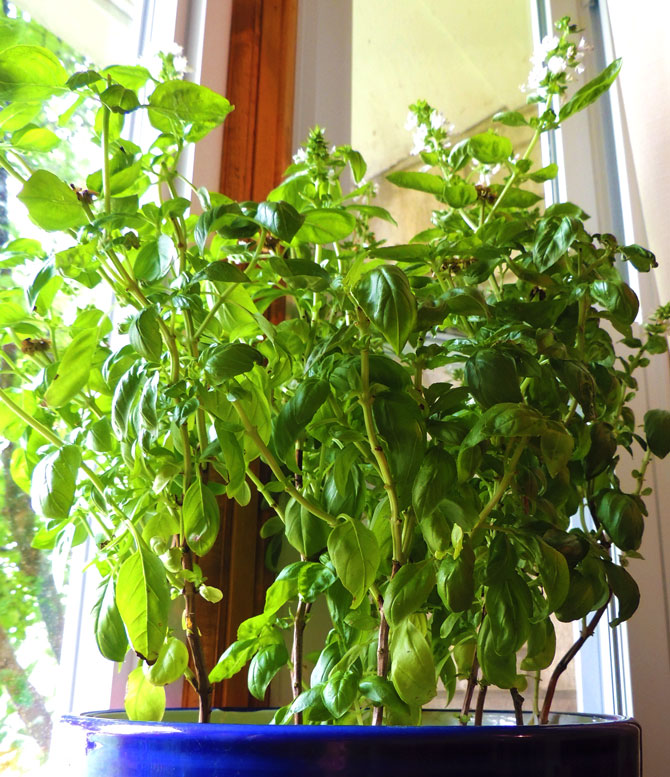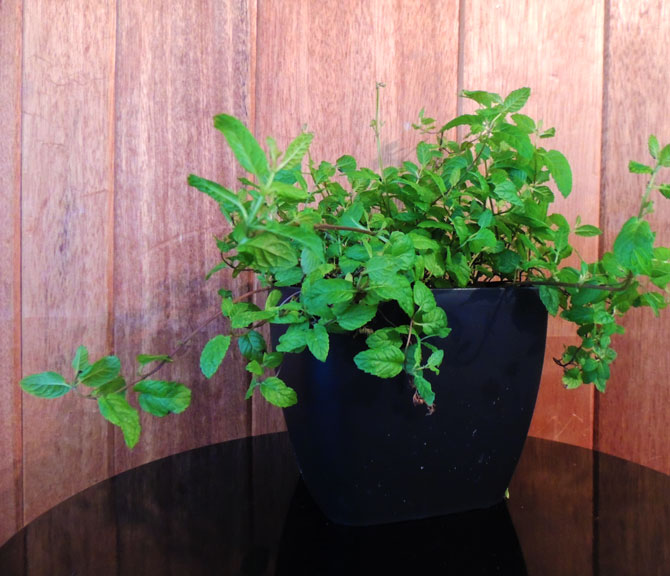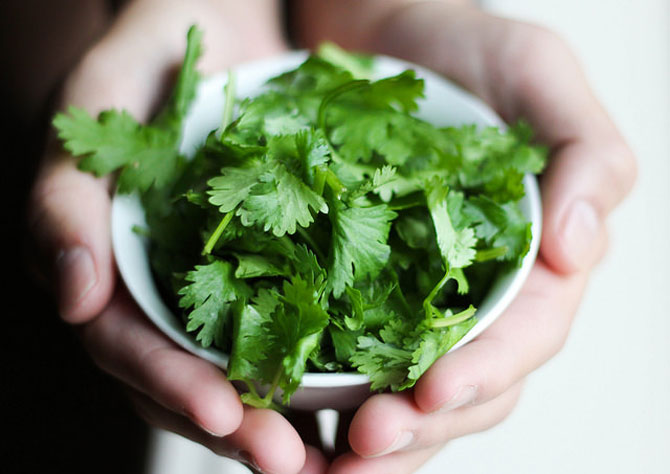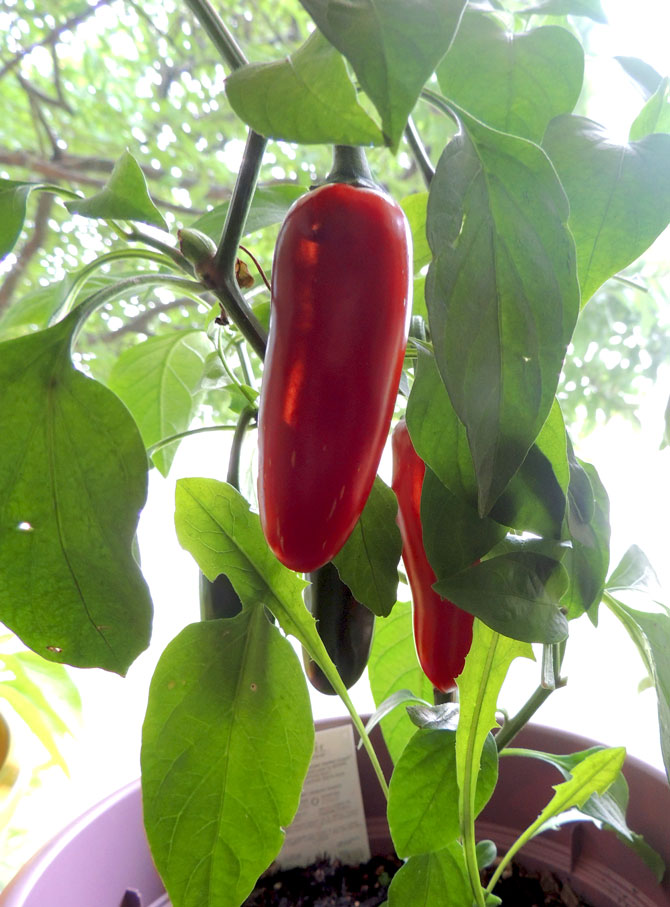So, you’re stuck in a tiny box of a room for a year, cast aside by parents who cooked real meals for you, and left to survive off of microwaveable foods and the next mystery meat that the dining halls serve. Yay college.
You don’t need to continue on this way, nibbling week-old lettuce and yearning for something better. You have options. Fresh ones. Simple ones. Cheap ones. The solution: it’s time to dust off those thumbs (green or not) and learn to survive on your own indoor plants. It’s high time you started a garden in the comfort of your very own dorm room.
With a little bit of water and TLC, these small, indoor plants will freshen up your meals, purify your room’s air and lead you in the direction of food independence.
Basil
This plant is the heartiest of the herb family, so if schoolwork has you hair-brained, it should be fairly easy to revive. Also, it grows extremely fast, so you only need a few seeds to get it started. Just plant them in a large pot and a few inches apart. They get pretty tall if they get enough sunlight, so make sure they have lots of room to grow in a windowsill.
The most important thing to remember is that basil requires a lot of watering, so you’ll want to keep up with it. Water it every day if you can. Other than that, just plant and wait. Once it’s mature enough to eat, you can pinch off leaves and throw them right in to a dish. It’s super versatile, so use it in pestos, pasta dishes, sandwiches and even lemonades.
Recipe Ideas: 10 Delicious Ways to Use a Bunch of Basil

Photo by Erica Coulter
Mint
This plant is not as common as some other herbs, but it is just about as easy to grow. It has the same branch-like stems that makes basil so tough, so don’t worry too much about taking care of this one either. In no time this baby will stretch across your entire room (ok, that’s an exaggeration, but they really do branch out pretty far). This plant requires pretty moist soil, so water it every day. Sunlight is not a huge issue, though, so it will do well anywhere in your room, as long as it gets a few days of light a week.
Also be sure to clip off any sprigs that seem dried out. These can steal nutrients from the healthy ones and kill off your plant.You can harvest the leaves at any size, so feel free to pop them in your mouth when you think they’re ready for an easy taste test. Use mint to flavor chocolatey desserts, salads or add it to your water bottle for a more exciting way to get your daily ounces in.
Recipe Ideas: 10 Recipes That Use Fresh Mint

Photo by Erica Coulter
Cilantro
This plant is a bit harder to grow, but don’t be afraid. It thrives all sorts of conditions and pots if you give it enough TLC, so that’s why it makes for a great dorm room edible. This plant doesn’t need much water, so just feel the soil to see if it needs more water.
But beware, cilantro is very sensitive to mildew, so be sure that you don’t over-water it. If you do spot some gray fuzzy stuff on your soil, scrape it off, uproot the infected part and stop watering for a few days. It’s a really fast grower, so harvest it daily by picking off leaves or whole sprigs. This is a great addition to salsas, summery soups and dressings.
Recipe Ideas: 22 Cilantro Recipes for the Herb’s Biggest Fans

Photo by Gabby Phi
Lettuce
The possibilities are endless with this plant. It grows to the size of its pot and beyond, so be prepared to clear out a little bit of space for it to produce more leaves. A bigger pot is better if you plan on eating a ton of it, plus its roots are strong enough to break a smaller one. Though it doesn’t require daily watering, it does require constant moisture, so be sure to feel the soil for this every day.
Also, dying leaves in contact with soil can kill off the entire plant, so you should clip off any wilted leaves near the bottom of the plant. The best part about this one is that you can harvest it any time. It is perfect for those days when you don’t feel like packing a fancy lunch, so use it on sandwiches or top it with your favorite dressing and veggies.
Recipe Ideas: 10 Delicious and Surprising Salad Recipes

Photo by Erica Coulter
Peppers
The best part about peppers is the variety that you can grow. Jalapenos and bell peppers are almost fool-proof, especially in the warmth of the indoors, but don’t be afraid to try other types. On a side note, many varieties come in vibrant colors, so this plant is a great way to spice up not only your recipes, but also your dorm room.
You should water this one every other day, but make sure to have a pot that drains well. It really likes warm spaces and sunlight, so next to a heater or in a windowsill would be a great place to put it. Also, make sure to plant seeds pretty far apart, since the individual plants grow pretty big. Use these to make your own salsa, stir frys or add them to salads for a kick.
Tip: The fruit of these plants corresponds to the size of the container that you grow them in, so don’t be alarmed when your bell pepper is only the size of a golf ball. The larger the container, the larger the pepper.
Recipe Ideas: 7 Ways With Bell Peppers

Photo by Erica Coulter
All you’ll need to become a dorm room farmer is some soil, water and seeds, and you’re well on your way. Place your plants in a sunny window, and follow the directions on the seed packets. If you’re not feeling brave enough to start from scratch, consider visiting the local farmers market for pre-grown plants. And don’t feel like you have to buy great containers, either. Anything with sufficient drainage will do, so feel free to get creative.

